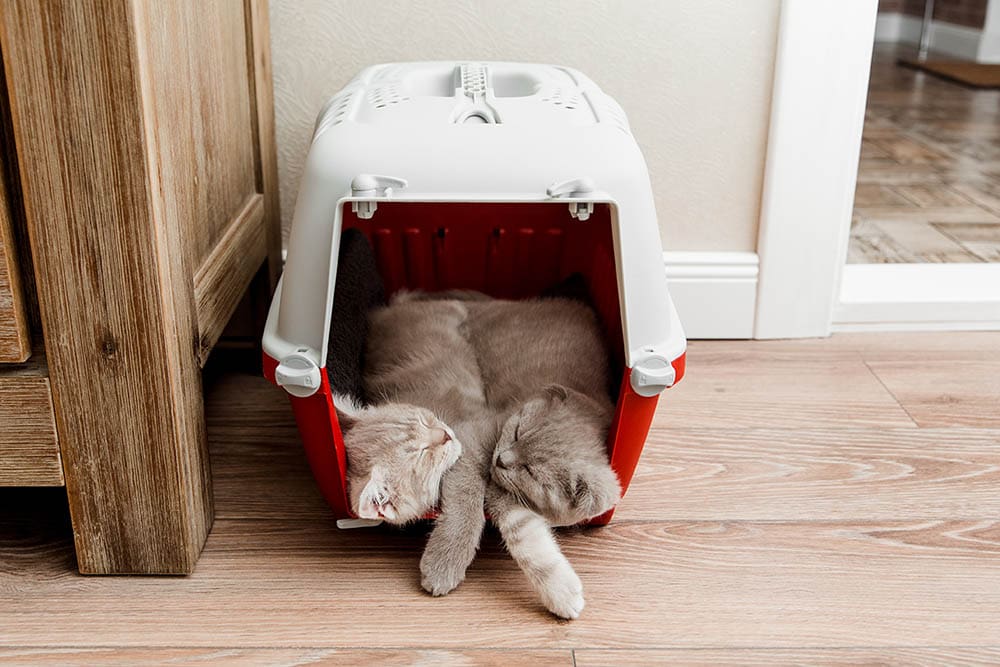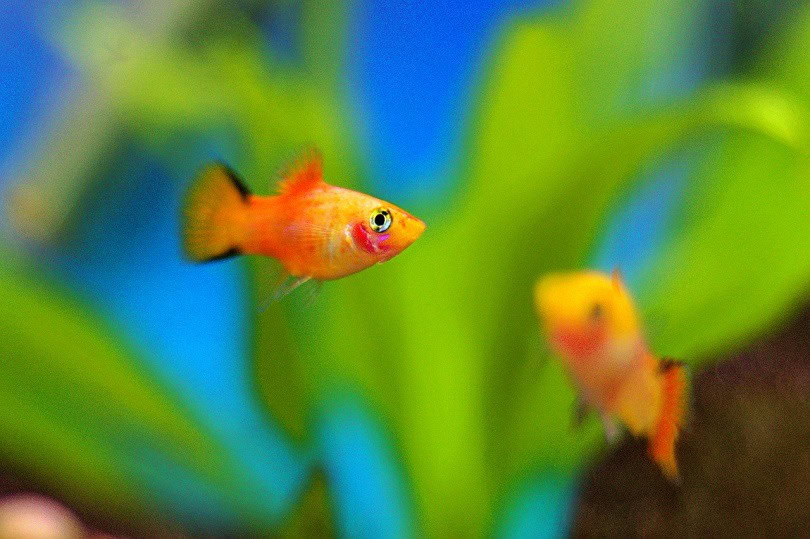VET APPROVED

The information is current and up-to-date in accordance with the latest veterinarian research.
Learn more »Click to Skip Ahead
Getting our cat into a carrier is one of the most difficult things we must do as pet owners. Your cat almost certainly associates the carrier with a trip to the vet, and we all know how they feel about that!
If you are a new pet owner struggling with this issue, you’ve come to the right place. We will show you how to get your cat into their carrier so you can get where you need to go.

What to Do Before Getting Your Cat in the Carrier
There are many factors that will influence the actual act of getting your cat into the carrier. Most importantly, are you alone or will you have help? It’s much easier to get a cat into a carrier with two people on the job. But nevertheless, let’s get you on track to a successful cat carrier mission!
1. Get a Good-Sized Carrier
In our experience, most people work against themselves by buying a carrier that’s too small for the cat. More often than not, a larger carrier with more doors is all you need to get your cat inside. Larger carriers can also hold more accessories, like cushions, toys, and a few bites of food.
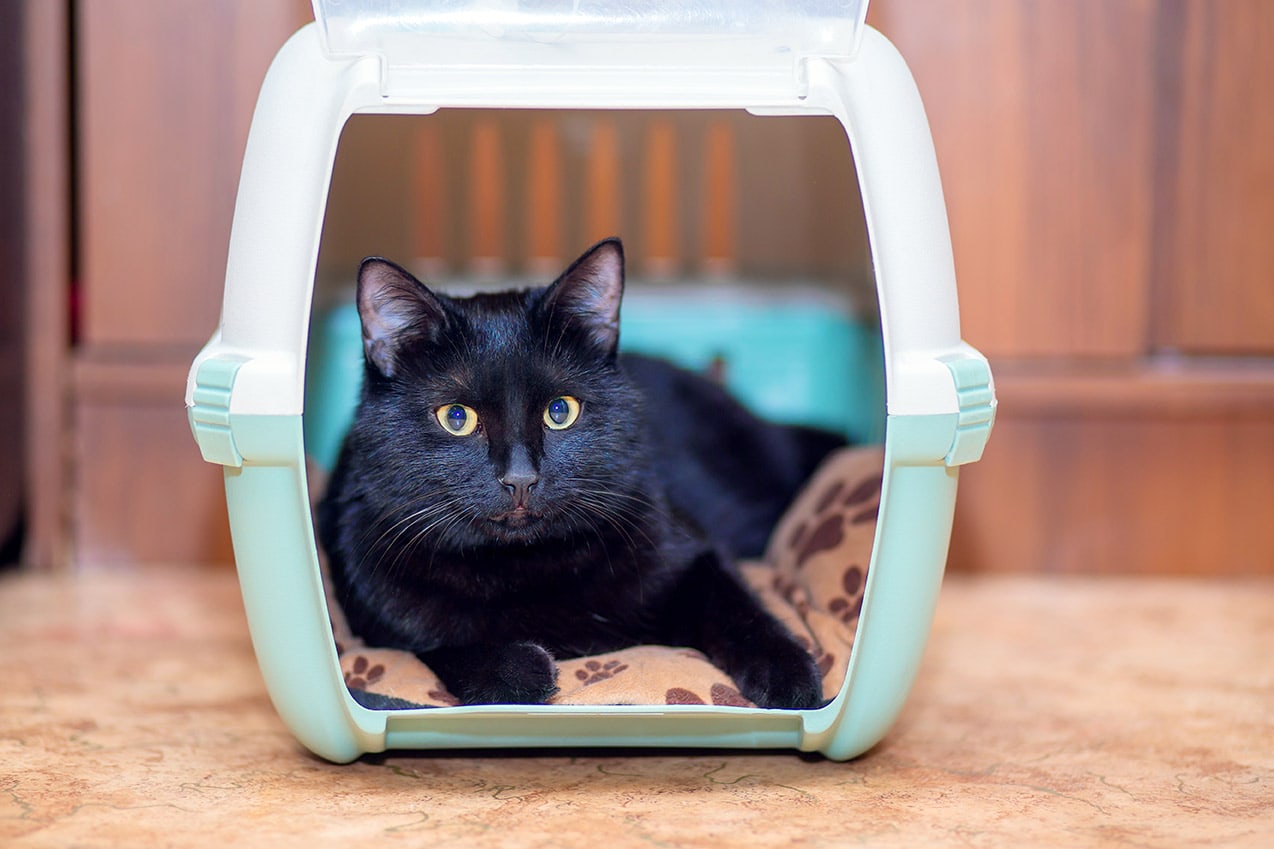
2. Let Your Cat Get Used to The Carrier
Cat carriers can be large and bulky, so most people store them away when they’re not using them. However, doing so will prevent your cat from getting used to it, and instead of being a comfortable place where your cat can rest, it becomes something that appears before your cat needs to go out of the house, which can strike fear into even the bravest cats.
We highly recommend leaving the carrier open in an area that the cats frequent so they can explore it at will. The carrier will acquire the familiar scent of their surroundings, helping your cat be more relaxed while inside.
3. Make The Carrier a Fun Place to Be
Continuing from where we left off in the last step, it can be helpful to make the carrier more inviting while it’s out in the open. Adding towels can make it more comfortable and will provide some security for your cat, who may like to dig or bury themselves below them, especially when they’re scared or unsure. Toys your cat likes to play with can also help them realize the carrier is not necessarily a bad place to be.
4. Use Cat Treats
Cats are extremely food motivated, and training your pet to go inside their cat carrier by placing a few treats inside each day is one of the most successful methods we’ve used. After a few days, the cat will be much less suspicious about getting inside the carrier. This way, they will start to associate the carrier with food and treats, and will eventually choose to go in on their own. They may even play or rest inside. Providing treats while you’re driving can also help keep the cat focused on something other than being trapped.
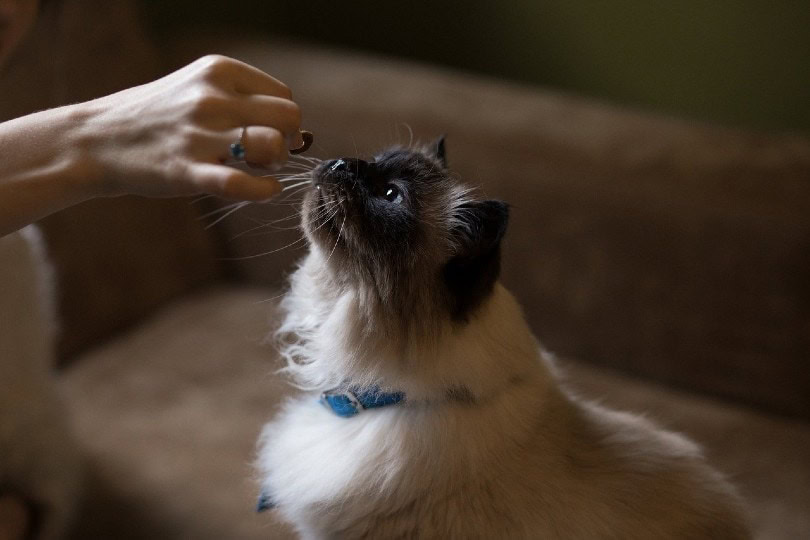
5. Close the Doors
Once your cat is completely comfortable entering and leaving the carrier at will, we recommend you start playing a game with them where you close one of the doors. Closing one of the doors will help the cat get used to being in more enclosed spaces, and as your cat feels comfortable, you can close more doors until the carrier is ready to be used. Do not rush any of the steps. Start with keeping the carrier closed for just a few seconds, working up the time.
6. Practice Carrying the Carrier
If you have been successful at getting your cat to feel comfortable with the carrier closed, we recommend moving to the next step, which is where you carefully lift the cage with the cat inside and eventually carry it around short distances. We recommend starting by lifting the carrier and setting it back down, and opening it up to help keep the gaming element going so your cat thinks you’re playing. Positive reinforcement with treats and plenty of praise can also make a big difference in how much your cat enjoys this game.
7. Experiment With a Towel
Some cats may suffer from motion sickness, and using a towel over the carrier may be able to help them stay calm. Other cats are extremely curious and like to know what’s going on, and might get frightened if you place a towel over the cage that prevents them from seeing where you are taking them. Like humans, each cat is unique, and some will like the towel while others will not, so you will need to experiment to see what works best for your pet.
You can also use a pheromone diffuser that can be applied inside the carrier a short while before the trip, as well as catnip treats. Anything to help your cat feel relaxed.

How to Get a Cat into a Carrier
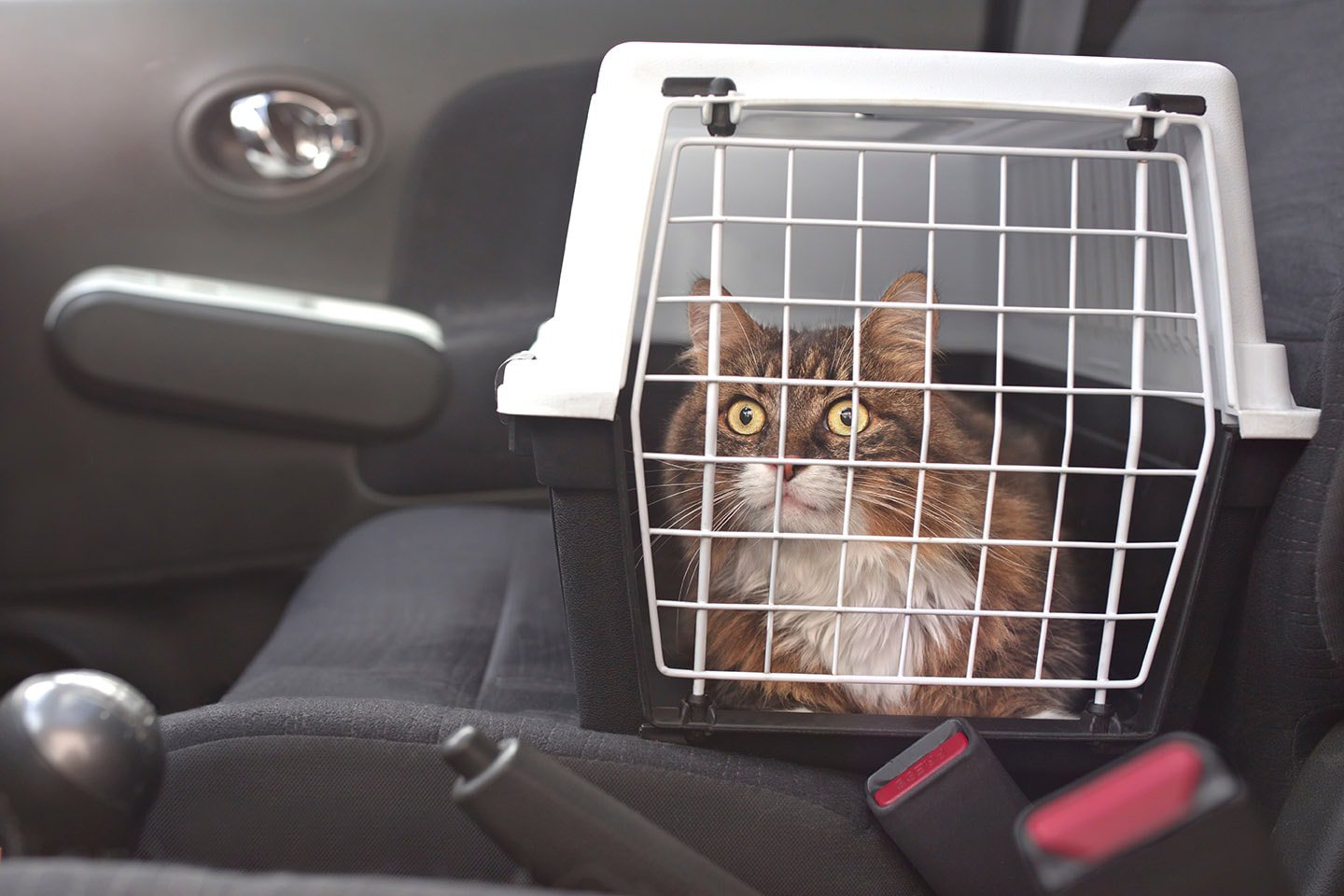
Head First
The head-first method is likely the best, especially if you have a cat who doesn’t like to go into the carrier. For this method, a longer cage with a side entrance is ideal, and you may need to lift it slightly or use a helper to make it a little easier to put the cat inside.
Lift the cat with one hand just behind the front legs and the other supporting the bottom behind the back legs. Move slowly but confidently and place the cat’s head inside the carrier as far as you can, then gently push them in with your other hand and shut the door.
Feet First
Many people consider the feet-first method the easiest, but we don’t recommend it for most people. It requires a large cage with a top opening, which we do like, but placing the cat in the carrier puts it in a perfect position to escape. They may be able to jump back out before you can get the lid shut, at which point the cat will be scared and more difficult to retrieve to try again.
To use the feet-first method, you lift the cat the same way you do with the head-first method. Open the top and lower the cat inside, then close it quickly before the cat can escape.


Summary
If your cat is frightened about getting into a cat carrier, we highly recommend getting them used to it by making it a part of their home environment instead of storing it away until you need it. Placing treats inside each day will help get them used to it, and some cats might even use it as a bed or hideout once they’ve accepted its presence. Unfortunately, getting your cat in the carrier and convincing them to like the ride are two different things. There is a good chance you will need to start this process all over again once you return home to get your cat ready for the next trip.
Featured Image Credit: Kolomiyets Viktoriya, Shutterstock
